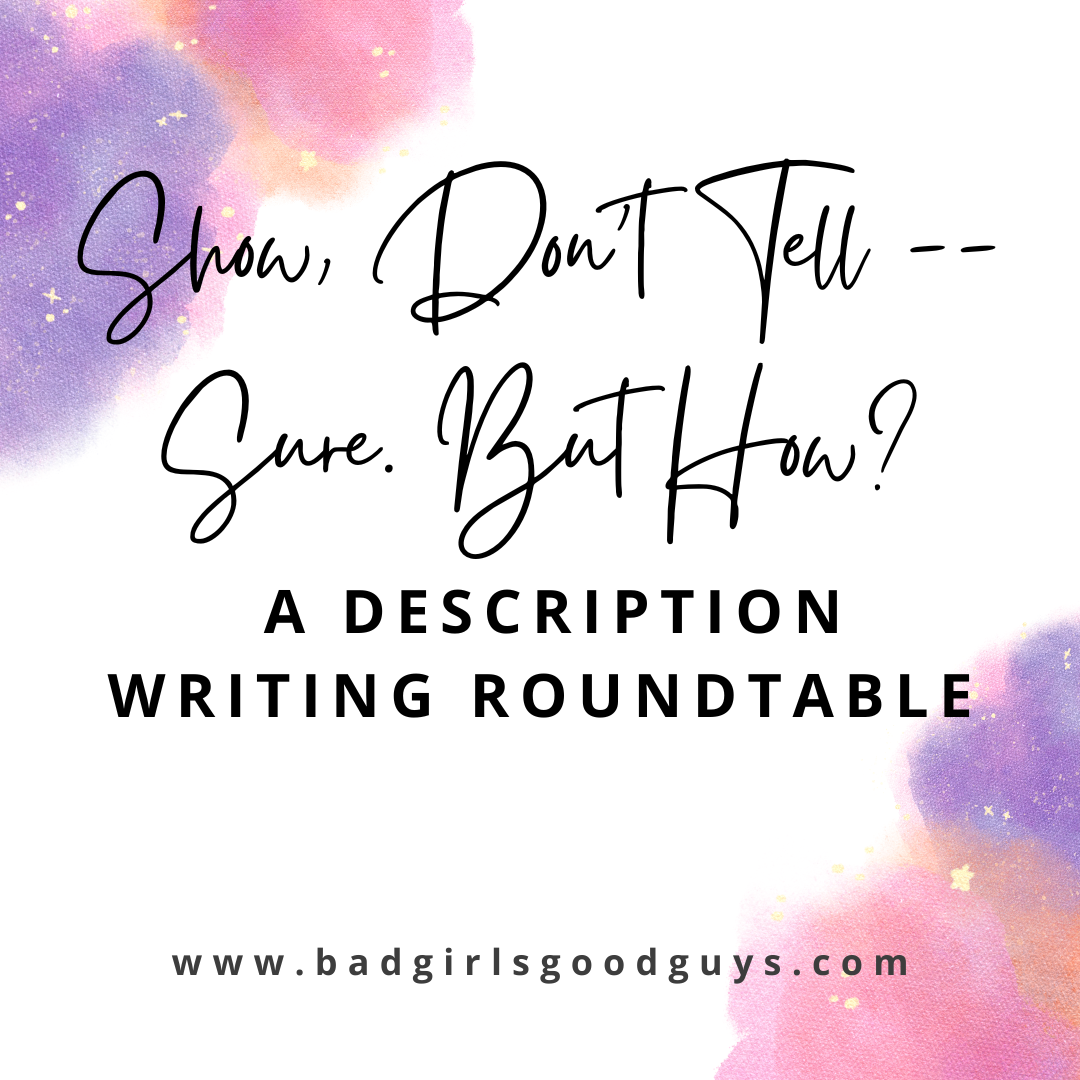Show, Don’t Tell — Sure. But How? A Description Writing Roundtable
For our next writers’ roundtable, we’re continuing this week’s theme and talking about writing description.
How much description do you tend to put into your work? When is (for you) it not enough? When is it (for you) too much?
Marian Allen: All detail should be “telling” detail — that is, it should contribute to the scene or to the story as a whole. It’s definitely too much if I’m reading it out loud and get bored.
Brian K. Lowe: I try to put in enough description to paint the necessary picture, but leave the rest to the reader’s imagination. No matter how you describe a character, everyone will see that character differently (like when you fantasy-cast your favorite book as a movie).
Herika Raymer: I try to follow the adage of ‘show don’t tell,’ but I also try not to pull a Thomas Covenant, where it takes two pages to finish one description. It’s a tricky balance, but I do try to be concise while being descriptive. Can be difficult when writing, because sometimes the words used are not ‘common’. I have to be sure that whatever words I use are relatively well known.
Bobby Nash: I know it sounds like a cop-out answer, but it depends. I like to make sure I’ve set the scene, let the reader know what they need to know. Conversely, there are things I leave less fleshed out so the reader can fill in the blanks. A murder scene, for example, I don’t go into every detail of the body’s condition, the blood, etc. The reader’s own imagination will do the work for me and make the scene even more graphic than anything I could write.
I play it by ear so too much or not enough is based on a gut feeling, I suppose. I want to make sure my readers have the information they need. In a mystery, especially, I want the clues to be in the story for the reader to find. That is important and I make sure it’s there.
Jessica Nettles: I work hard to describe scenes in a way that gives readers a sense of place. At the same time, I’m a lot like Bobby in that it depends on what’s going on or what’s needed. I have had to learn to balance what to describe and what not to describe. I wrote scripts for a while, and had to relearn how to weave in good description when I returned to prose writing.
Ef Deal: When I depict a setting, I try to capture more than the visual accuracy of the scene. I use colors, scents, light and shadow, and furnishings to convey or evoke as much of the emotional freight as I can.
Ernest Russell: I like to write enough description so the reader has something for their imagination to work on, they’ll fill in blank far better if I did it right. If particular details are needed, I’ll be certain they are in the description.
Read the full article:
https://seanhtaylor.blogspot.com/2022/07/show-dont-tell-sure-but-how-description.html

